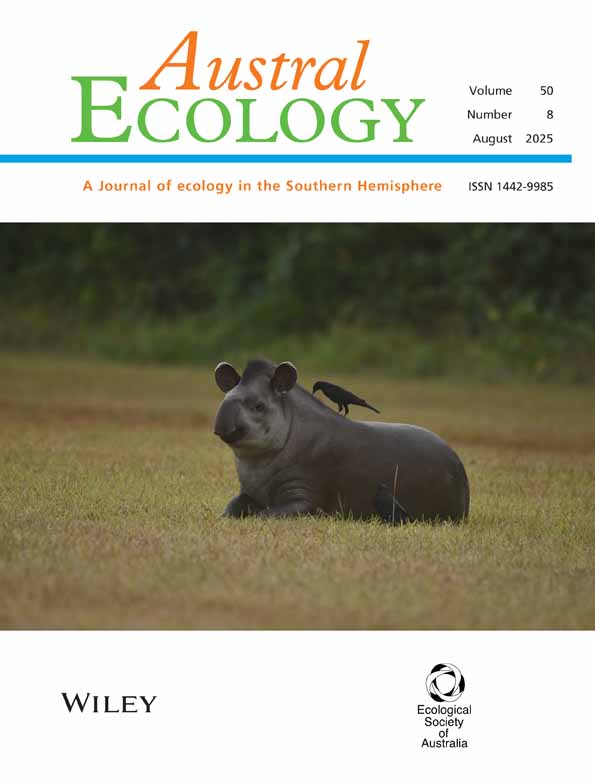Predation by Australian magpies (Gymnorhina tibicen) on pasture invertebrates: Are non-territorial birds less successful?
Abstract
Diet composition and prey intake rates of Australian magpies in a New Zealand population were investigated to determine whether flocking, non-territorial birds were less successful predators of pasture invertebrates than territorial birds. Time-activity budgets showed that flock magpies foraged throughout the day during February and March, indicative of a prey shortage at that time. Prey abundance was therefore measured in the autumn months but there was no evidence of a large quantitative difference in the food supply of flock and territorial magpies. Significantly fewer invertebrates were collected from pitfall traps in the flock foraging area, but these were counterbalanced by significantly more scarab beetle larvae and more flying insects, obtained by sweep-netting. When compared with territorial magpies, flock birds exhibited similar peck rates, prey intake rates, and earthworm intake rates. While there were qualitative differences in the diets of flock and territorial magpies, determined by faecal analysis, five of seven prey items analysed were captured in the same relative proportions by the flock and territorial birds. Earthworms exceeded their relative availability in the diets of flock birds, and more scarab larvae were found in the diets of territorial magpies. Non-territorial magpies were therefore no less successful than territorial birds during the autumn, and it is suggested that the function of flocking behaviour may eventually be discovered through consideration of why non-territorial birds never occur as solitary individuals, rather than emphasizing comparisons with territorial magpies.




